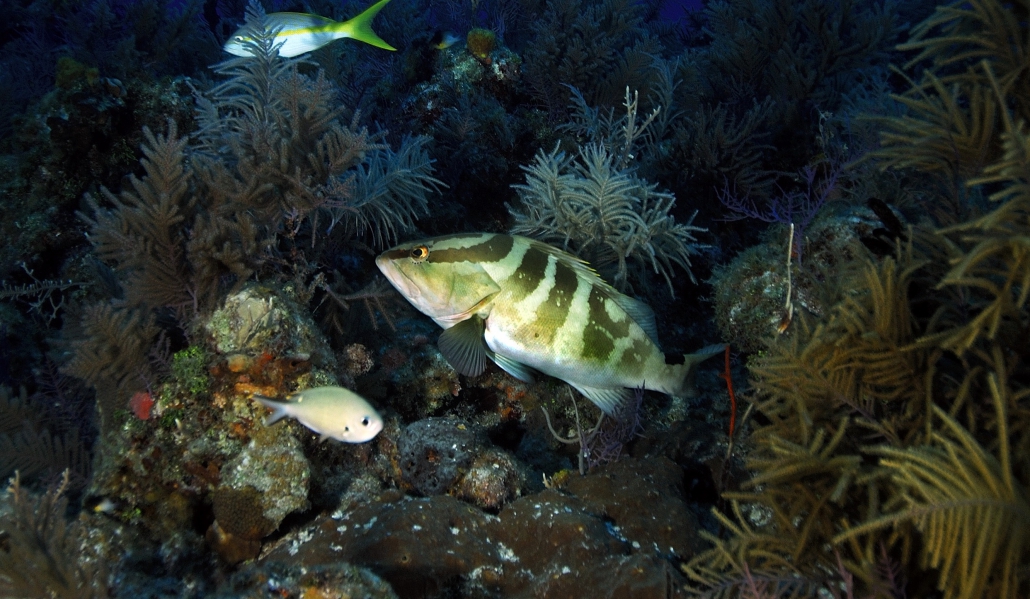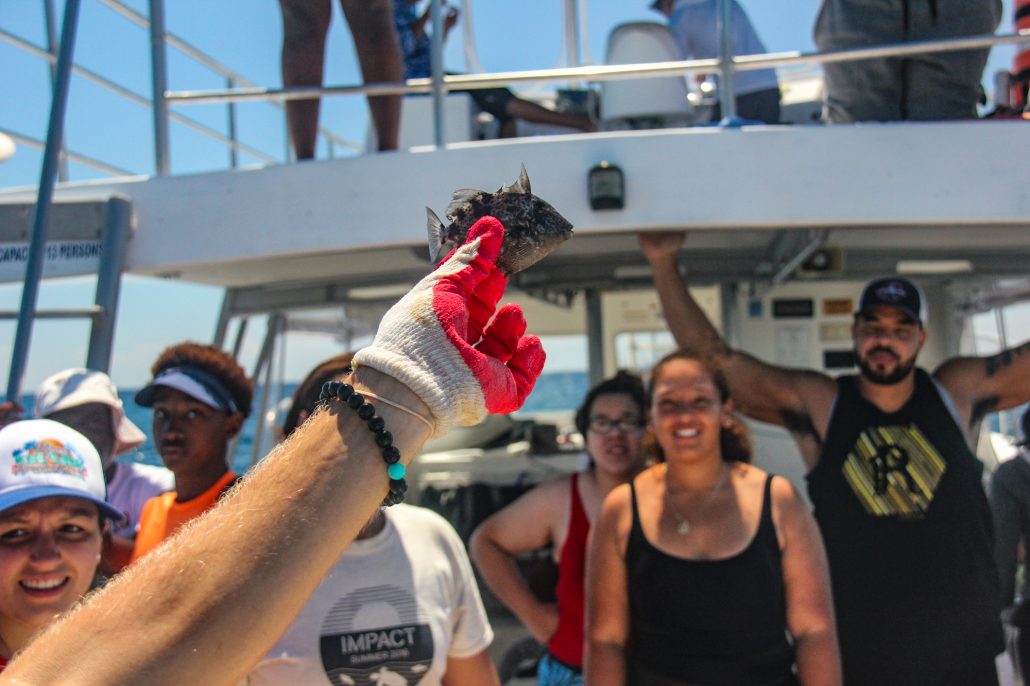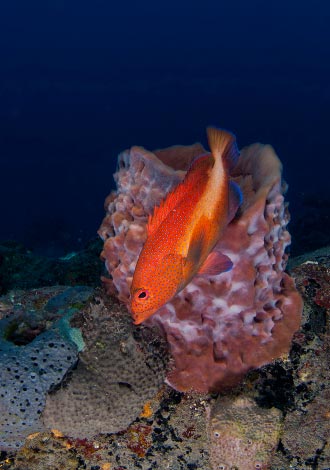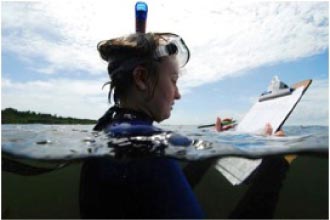Overview
The goal of this work is to explore food web dynamics, such as predator-prey interactions, in mangrove and coral reef systems. Predators can impact the distribution and abundance of their prey most obviously by killing and consuming them. However, predators can also impact their prey through “risk effects” (i.e. freighting their prey). By shifting their feeding areas or changing their feeding behaviors to avoid predators in response to risk effects, prey can subsequently impact the behaviors and abundance of other organisms, which can result in trophic cascades. Understanding these food-web relationships are important for developing models to help predict how human influences or changes in environmental conditions may impact ecosystem dynamics. This is particularly important given that mangrove and coral reef are among the most biologically rich, yet most threatened ecosystems in the world. Major impacts include overfishing, pollution, habitat destruction and climate change.
Some of the major questions we are currently investigating include:
SRC – In Focus
Scientific Publications
Hammerschlag N, Heithaus MR, Serafy JE. 2010. The influence of predation risk and food supply on nocturnal fish foraging distributions along a subtropical mangrove-seagrass ecotone. Marine Ecology Progress Series 414: 223–235
Hammerschlag N, Ovando D, Serafy, JE. 2010. Seasonal diet and feeding habits of juvenile fishes foraging along a subtropical marine ecotone. Aquatic Biology, 9:279–290.
Hammerschlag N, Morgan A, Serafy JE. 2010. Relative predation risk for fishes along a subtropical mangrove-seagrass ecotone. Marine Ecology Progress Series, 401: 259–267
Hammerschlag N, Serafy JE. 2010. Nocturnal fish utilization of a subtropical mangrove-seagrass ectone . Marine Ecology, 31:364–374
Serrano X, Grosell M, Serafy JE. 2010. Salinity selection and preference of the grey snapper Lutjanus griseus: field and laboratory observations. Journal of Fish Biology, 76: 1592–1608
Hammerschlag N. 2009. Nocturnal fish distribution, feeding and predation risk in relation to a mangrove seagrass ecotone. University of Miami Publication, Ph.D. Thesis, 132 pp.





 Understanding predator-prey relationships is important for developing ecosystem models which can be used by wildlife managers to help predict how human disturbances or changes in the environment may impact ecosystem dynamics.
Understanding predator-prey relationships is important for developing ecosystem models which can be used by wildlife managers to help predict how human disturbances or changes in the environment may impact ecosystem dynamics.